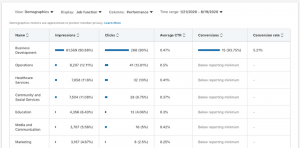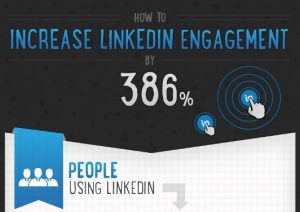— October 17, 2018
Wouldn’t it be so easy if your email marketing could seamlessly tie your new leads with your existing sales funnel? The emails you send out to your potential leads would always be relevant while the sales pipeline would have fewer bad leads or leaks, and your conversion rate would always be on the rise.
Sounds like something that goes on in a parallel universe, doesn’t it?
Not really, though. With the help of drip marketing, this idea can become a reality in your world too. Email drip campaigns are a set of marketing emails which are automatically sent out when a lead or a customer triggers a certain action on your website or blog.
What is an email drip campaign?
To put it more simply, drip campaigns are sets of automated emails that go out based on specific timelines or user actions. They enable you to stay in touch with groups of people based on events like when a user signs up for an offer or how often that user visits your site. Each time a drip email is sent out, it comes from a queue of already-written emails—there’s no need to manually write and send each one every time. They can even be personalized with your contacts’ name, company info, and more.
What to focus on
Drip emails have an open rate of about 80% more than single sends (a.k.a. email blasts), and average click-through rates are 3 times higher.
Some of the best practices that will help your email drip campaigns go a long way are:
Communicate effectively
Timing communication is key. Based on subscriber preferences or even the time since you last emailed them, getting your email frequency down is important.
Segment your lists
It is necessary that you know to whom your emails are being sent. And we don’t mean your subscribers’ names and email addresses. We mean their interests, email preferences, location, etc. Anything you need to provide them relevant content. You don’t want to receive emails about scuba diving gear when you’re afraid of water, and neither do subscribers on your email list. Segmenting your email lists can help your business to create highly personalized content for all your customers and leads.
Diversify your content
You’ll only know what works best for your email base if you test by sending them different, but relevant content. You could experiment with a three-part autoresponders series, but switch up variables such as your call-to-action or subject lines. See what works best, and then implement those practices moving forward.
The case for drip marketing
Email drip campaigns have a host of benefits to offer, if implemented correctly. A little time and effort in the start go a long way. We’ve noted some key advantages of incorporating a drip strategy in your email marketing.
Boost engagement & loyalty
Emails triggered based on user actions have a better chance of getting a response than standard email campaigns. Drip email campaigns allow you to engage your prospects better and much more efficiently. Whether your user is extending their subscription or buying a new product, you can leverage drip campaigns to engage customers during the renewal or new purchase process.
With the use of an automated drip marketing campaign, you can re-engage customers and lead them back to the “buy” button on your website. Whenever a user leaves an unpurchased product in their cart, use a drip email campaign to follow up and let them know that the product is still available for purchase.
Your drip emails have a pretty good chance of closing the sale. Abandoned cart emails average a 46.1% open rate, a 13.3% click-through rate, and $ 5.64 per email in extra revenue.
Promote relevant content
When you’re aware of where your lead fits into your sales cycle, it is extremely easy to send them content tailored to their needs. The same goes for when a new contact signs up through an opt-in form on your website. With a proper drip email campaign in place, your emails already contain information which will be highly relevant to your email recipients.
Drip campaigns become especially handy when you’re running a small business and cannot give as much time and effort to every customer and lead. Try targeting user segments with drip marketing based on which aspects of your service they use most, or what kinds of content they’re most interested in.
Create a lead nurturing marketing funnel
Leads are prospective customers who might buy your product in the near future. They need a bit of hand-holding or nurturing in the start, but sticking with them until they’re ready to make a purchase is extremely important. Nurturing leads through the buyer’s journey can take many forms, like educating users on your service, helping them use certain features, or offering them free trials.
As a small business, you might find it difficult to hand-hold every lead who has the potential of becoming a paid customer. Drip emails are automated and can be crafted to be sent out at a particular time and to a specific audience.
An example of how marketers do this is by sending drip emails that are designed to be teasers. After a couple of teaser emails, an email with a formal announcement will follow. For example, a band’s recording label sends teaser emails containing a short message about an upcoming album to be released. Another teaser email will be sent several days later, containing the track list of the album.
The next drip email will contain the details on when the album will be released, as well as how to purchase the album or the music, and where. There may even be emails about upcoming events for the band’s album promotions.
In this manner, the marketer can capitalize initially on the prospect’s curiosity, then feed it further with the succeeding drip emails. By the time the album is released, the prospect may decide to buy it.
Help in increasing brand awareness
Drip campaigns help keep your business in the forefront of your customers’ minds. Quick recognition and recall will guarantee that your business will remain relevant, and drip marketing will provide these “reminders” for the customers.
Even if a prospect did not end up buying from you, a series of highly relevant emails sent frequently will make sure to keep your brand alive in the prospect’s mind and they will come back to your website if you’re selling something they need. When a prospect decides they are ready to engage, the first place they will visit is the business they remember and trust.
Drip marketing allows your business to keep in touch with the customer and, in the process, establish a positive relationship with them. As a result, your company will be right there when the prospect is ready to buy.
Having a welcome email series in place is a good way to start off your drip email campaigns. If someone subscribes to your newsletter, you could use a welcome drip to automatically send that user some of your most-shared blog posts.
At the very least, welcome emails are a nice way to say, “Hey there, nice to meet you!”
Experian’s report on welcome emails shows that they have a 58.7% open rate as compared with normal emails which are at 14.6%. When an automated welcome email is sent immediately after a user signs up, the open rate jumps to a staggering 88.3%!
Re-engage with unengaged contacts
Automated drip campaigns provide a host of opportunities to reach out to your lead base at any given point of time. With time, some contacts may become inactive and never look at your emails. But that’s not to imply you should stop sending them emails. You just need to tweak the set of emails you send.
Along with a “We’re sorry to see you go!” or “Hey, we miss you!” re-engagement campaign, you could also use your drip campaign to push other marketing channels like Facebook or Twitter.
Remember: Users aren’t necessarily not interacting with you because they don’t like you. They might just prefer mediums other than email, or you may just need to tweak the content.
When you do begin a drip campaign to reach out to these folks, take it slow. Don’t send them too many emails at once or ask them to make a purchase. You could offer them a discount on their next purchase or simply send across a feedback form asking why they’re not engaging and if they’d prefer receiving fewer emails from you.
A lot of this can be applied to customers and/or leads who abandon their carts and don’t end up making a purchase at all. You’ve done your bit to get them to the checkout page, but even with a discount available, you might not be able to convince these people into making a purchase.
A study by the Baymard Institute revealed that around 69% of shoppers abandon their cart, but the shocking part is that this amounts to approximately $ 260 billion in revenue loss for online retailers.
When you’re creating a drip campaign for users who’ve abandoned their carts, remember to make sure your email resonates with your brand, catches your reader’s attention and instills enough curiosity that they decide to return to your website.
Check out our list of 10 abandoned cart drip email campaign ideas to get you started.
Use drip campaigns in diverse ways
You can set up specific drip campaigns in your email marketing software for educating users, rewarding your best customers, getting volunteers for your nonprofit, and so much more. It is however important that you target user groups based on segmentation and use your email drip campaign to reach out to the right people. You can segment your lists based on demographics, purchase and browsing history, and even which email a particular user has opened and interacted with in the past.
A thoughtful follow-up email campaign can be the perfect way to remind users to buy your product, teach them how to use your tool or service once they’ve made a purchase, and even the simple fact that you’re always around to help them whenever they need it.
There you have it – Drip email campaigns have a ton of benefits and including these in your email marketing strategy can boost sales and leave a long-lasting impact on your customers and leads.
Digital & Social Articles on Business 2 Community
(84)







